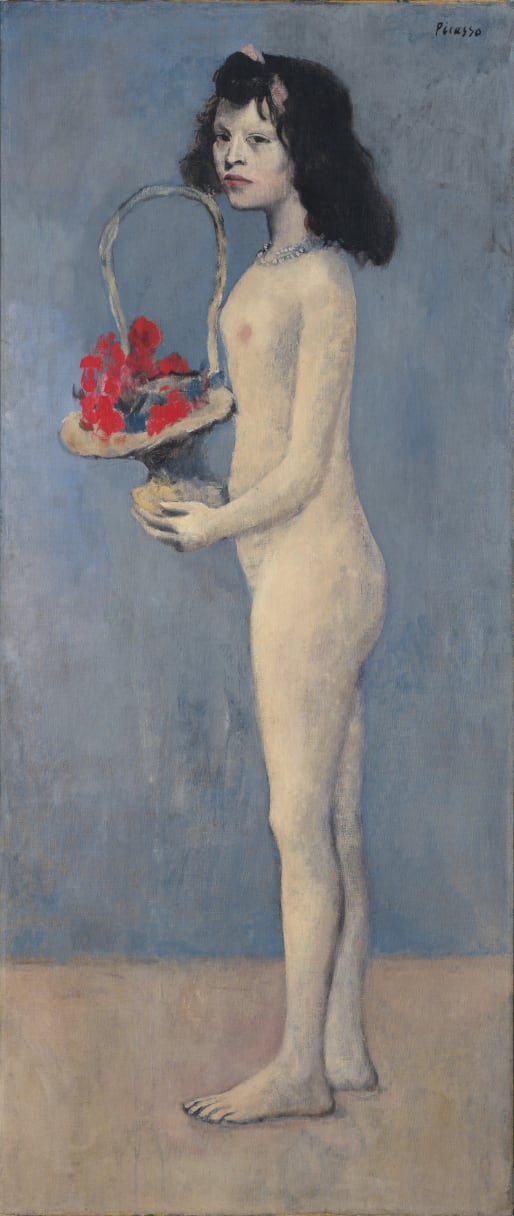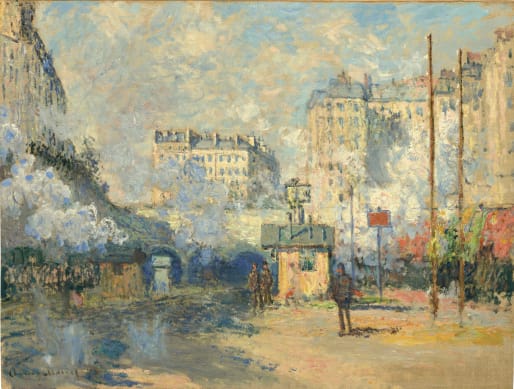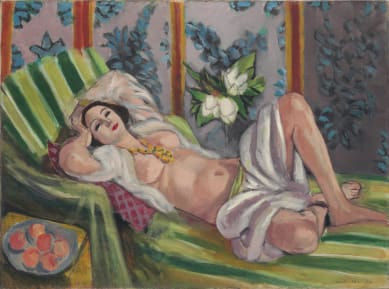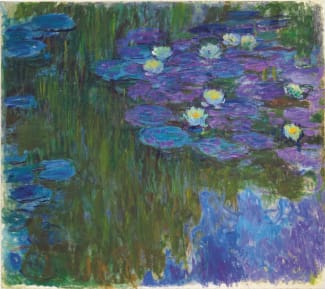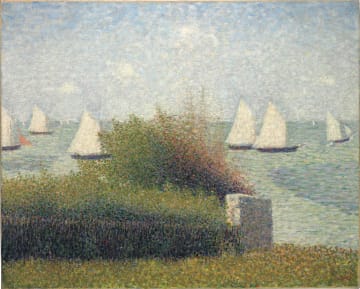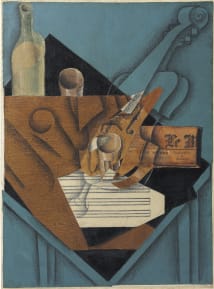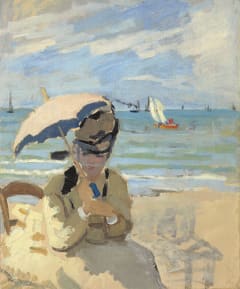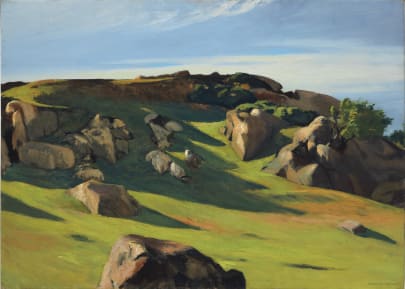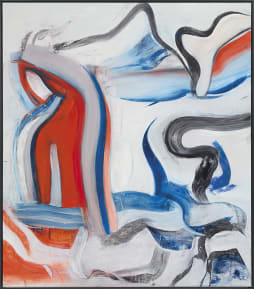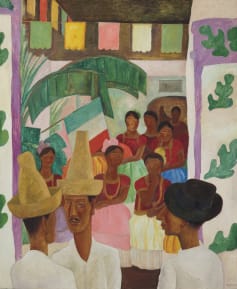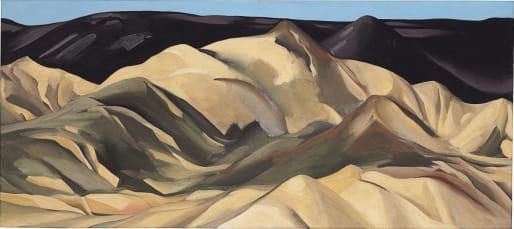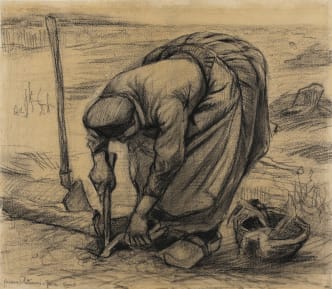In May, more than 1,000 works of art and fine objects collected by banker and philanthropist David Rockefeller, and his wife, Peggy, will be sold at auction in six Christie's sales over three days, and an accompanying 11-day online sale. The proceeds, which Christie's expects to total in excess of $500 million, will benefit the many charities they supported during their lifetimes, including the Museum of Modern Art (MoMA). David Rockefeller, who died last March, was one of those rare multifaceted individuals who excelled at almost everything he did. He was a renowned banker, entrepreneur, civic leader, philanthropist, preservationist and developer, among many other things. He loved building institutions as much as he loved foreign policy and economics, but above all he loved to collect. "Fillette à la corbeille fleurie" (1905) by Pablo Picasso. Estimate: $90-120 million. Credit: Courtesy Christie's In many ways, he was born to do this. Both his mother, Abby Aldrich Rockefeller, and her sister, Lucy, were famous collectors with interests ranging from modern prints and drawings to ancient Chinese textiles. As a student at Harvard, David spent many pleasurable afternoons with his aunt in Providence (where her collection now forms one of the key holdings of the Rhode Island School of Design's art museum) and he often spoke about his mother's impact on his taste and his interest in surrounding himself with beautiful objects. He was 14 in 1929 when his mother and several of her close friends founded MoMA, and in a way, he grew up with the Museum as his second home: it was literally built adjacent to the house he was born in. After he and Peggy married in 1940, they began to collect art in earnest, and were lucky enough to have Alfred Barr, MoMA's founding director, as a guide. Over more than 50 years, he and Peggy acquired some of their finest paintings including Picasso's "Fillette à la corbeille fleurie" and "The Reservoir, Horta de Ebro," as well as Gauguin's portrait of Dutch painter Meyer de Haan, and Seurat's "Roadstead at Grandcamp," often purchasing these works from an earlier generation of legendary collections, like those of Alfred Chester Beatty and Gertrude Stein. 1/10 "Odalisque couchée aux magnolias" (1923) by Henri Matisse. Estimate: $70-90 million.Credit: Courtesy Christie's... Read More What struck me most about David, whom I was fortunate enough to meet in the mid-1990s when I became director of MoMA, is that for all the pleasure he took in the hunt for beautiful works of art, he took even more pleasure in sharing his acquisitions with others. He could be obsessive in his search for something -- applying an intensity to his quest that I suspect was learned when he was a child and began assembling what was to become one of the finest private collections of beetles in the world -- but he never lost sight of the fact that works of art were meant to be seen and understood in the broadest possible context. David took advice gladly, always listened carefully, but in the end, he and Peggy made their own decisions about what they acquired. And they lived with their art in New York City, in the village of Tarrytown, and in their houses in Maine. (Peggy could have been an interior decorator her sensibility about how to put works of art and objects together was so acute.) I remember vividly the joy David took when he would move a painting from one spot to another and, in doing so, discover something new and unexpected about that work of art. David's energy was legendary. He could walk for hours and sail all day and never feel tired, even long into his twilight years. Even in his 90s he enjoyed making long studio visits to artists whose work interested him, like Ellsworth Kelly and Jane Hammond, and he loved going to the galleries in SoHo and Chelsea to see what was going on. I think one of the reasons his mind stayed so agile when many of us would have long settled into a quiet dotage was because he thrived on the new and always wanted to learn. And often he learned by acquiring, discovering new artists like James Siena on his forays to the galleries a decade ago. "Extérieur de la gare Saint-Lazare, effet de soleil" (1877) by Claude Monet. Estimate: $40 million Credit: Courtesy Christie's Nothing piqued his interest more than having to make an aesthetic decision. Two weeks before he died, well into his 101st year, several of his friends were with him in the Caribbean for a long weekend. One of us was about to publish a book on gardens, and needed to select a cover image. The publisher had sent several options to consider but we were all unsure of which one was best, so we decided to show them to David. He looked for a few minutes and then with an unerring sense of confidence said, "That one," and that one it was. He had trained his eye over a lifetime to make discerning judgments about anything visual and he had an uncanny ability to always pick the right image or work of art. It has been said that David was the last of an extraordinary generation of collectors and philanthropists, and there is a lot of truth to this. He grew up in a privileged world but never let privilege define him. He remained true to his values and understood that giving back to his city, to his country, and to the institutions that mattered to him was as important as creating new wealth, and that a love of beauty was an essential dimension of being a cultivated human being. It will surely be a long time before we see anyone like him again.
|

